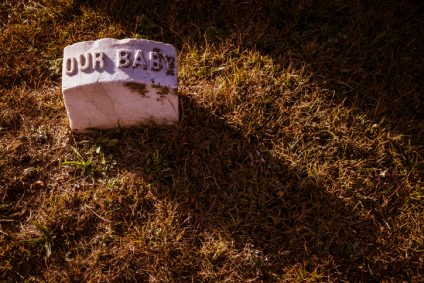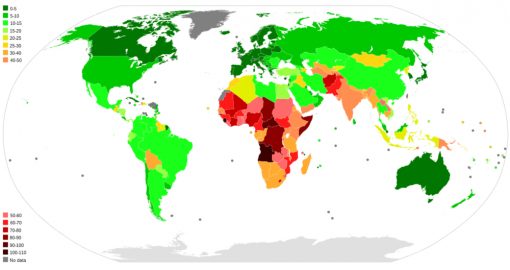
Sometimes a picture is worth a thousand words, or in this case, two pictures.
To hear lactivists tell it, breastfeeding is lifesaving for infants and therefore, formula is deadly. Indeed, there are a variety of scientific publications that purport to show how many lives and how much money could be saved if more women breastfed exclusively.
[pullquote align=”right” cite=”” link=”” color=”” class=”” size=””]Breastfeeding saves lives in theory, but not in reality.[/pullquote]
Tellingly these papers rely on mathematical modeling NOT actual population data. Why? Because breastfeeding saves lives in theory, but NOT in reality.
Don’t believe me? Below are two pictures of reality and they demonstrate quite impressively that breastfeeding rates have absolutely nothing to do with infant mortality.
This a map of the world colored to reflect exclusive breastfeeding rates at 6 months of age. The data come from the World Health Organization.

Yellow reflects low breastfeeding rates; progressively redder colors reflect higher exclusive breastfeeding rates at 6 months. You can see the the US, Canada and Eastern Europe have among the WORST exclusive breastfeeding rates in the world.
Now let’s take a look at infant mortality rates. These data come from the the United Nations World Population Prospects report and the CIA World Factbook.

The color legend shows that the greener the country, the LOWER the infant mortality rates.
The key point is glaringly obvious. The countries with the lowest infant mortality rates have very low rates of exclusive breastfeeding at 6 months. Of course there are countries that have high exclusive breastfeeding rates, such as in South America, that also have low mortality rates, but most of the countries with high exclusive breastfeeding rates have hideous rates of infant mortality.
In other words, breastfeeding has NOTHING to do with infant mortality. Indeed, a visitor from another planet looking at these images might conclude that formula is lifesaving, NOT breastfeeding.
That’s not surprising. Breastmilk is food, not magic. It doesn’t protect children from vaccine preventable diseases, for example, since the antibodies that attack most pathogens are IgG antibodies and these are too large to pass through breastmilk. And although breastfeeding does offer protection from colds and diarrheal illnesses, they aren’t the only important causes of infant death.
Why is there such a tremendous disconnect between theory and reality? Because most research purporting to show benefits of breastfeeding is weak, conflicting, and, critically, riddled with confounding variables. In high income countries especially, breastfeeding is associated with maternal education and socio-economic status. Most of the purported benefits of breastfeeding are actually benefits of wealth and easy access to healthcare.
Breastfeeding is definitely a good thing and we should be providing vigorous lactation support for women who choose to breastfeed, BUT we should not lie about the real benefits and true limitations of breastfeeding. Breastfeeding is NOT lifesaving, not merely in high income countries like the US, but in most countries around the world. The only exception is in the case of premature babies at risk of necrotizing enterocolitis. Breastmilk can lower (but not eliminate) the risk of NEC.
The idea that breastfeeding saves lives in industrialized countries is essentially a lactivist lie, based on theoretical models while utterly ignoring real world population data. It is designed to create demand for lactation goods and services. That does not mean that lactivists don’t believe it; they believe it fervently, but as these images demonstrate, it is obviously not true.
If your goal is a healthy baby, formula is just as good, if not better than breastfeeding, in ensuring infant health.

